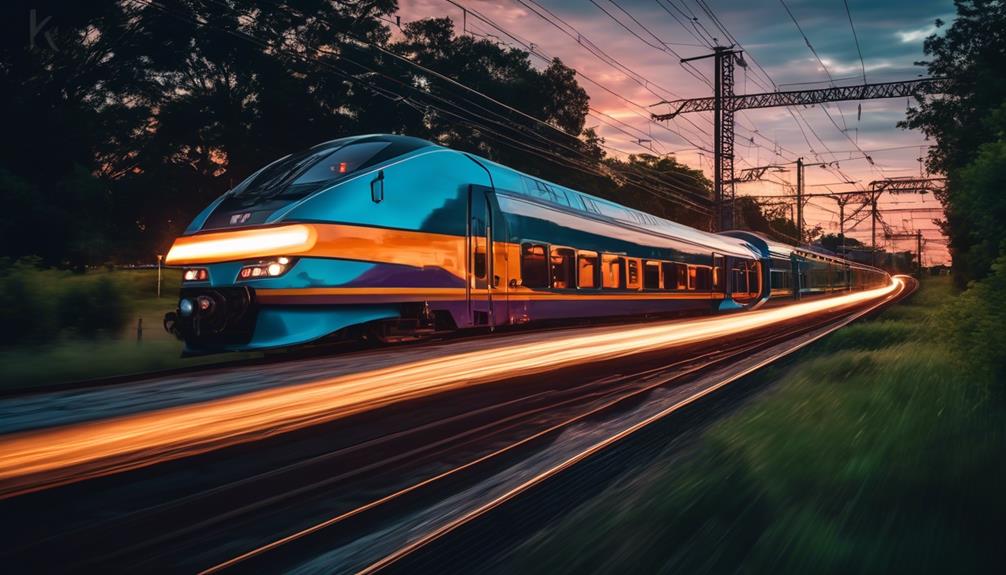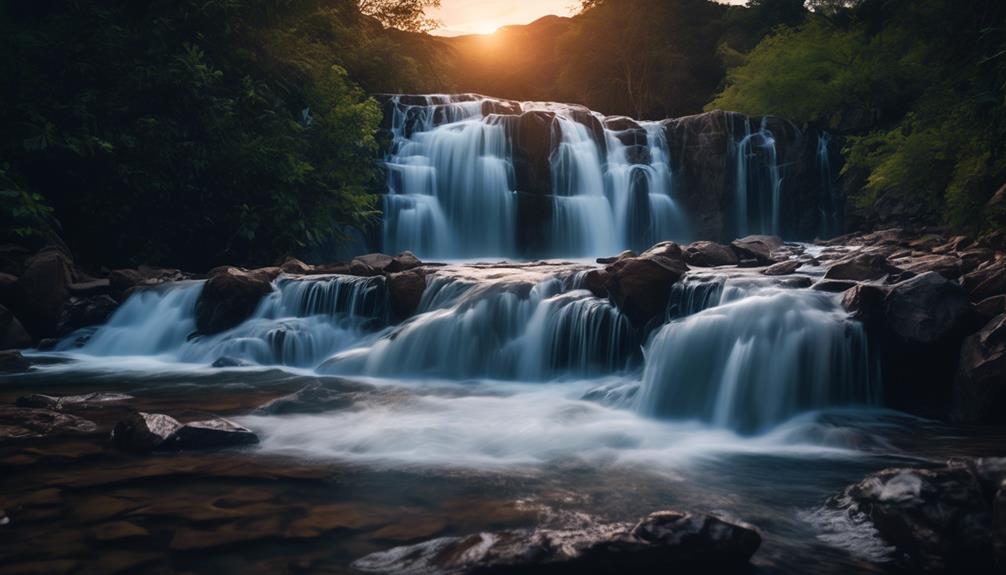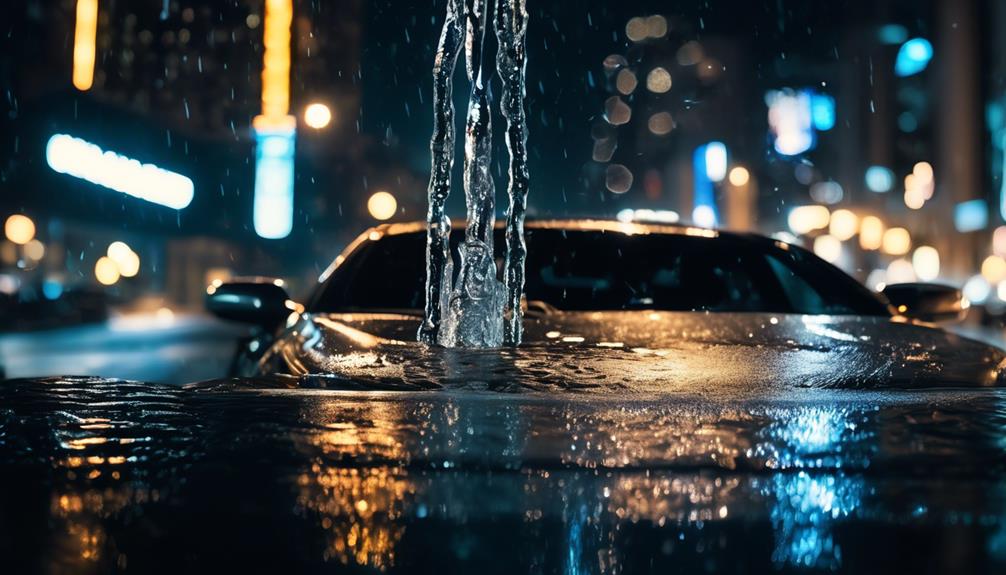Please note this post may contain affiliate links picked by me (Jay) that I have deemed may be of interest or relevant to you the reader of this.
These links do not affect the cost of the thing if you decide to purchase but i may get a little money if you choose to purchase.
For more information on my affiliate link policy click here.
Did you know that mastering shutter speed can dramatically improve your photography skills? It's true! In fact, according to a recent survey conducted by a leading photography magazine, 83% of professional photographers consider shutter speed to be one of the most important settings to master.
But what exactly is shutter speed and why is it so crucial? Well, in this discussion, we will explore the fascinating world of shutter speed and uncover the secrets to capturing stunning images.
So, whether you're a beginner looking to take your photography to the next level or a seasoned pro in search of new techniques, buckle up and get ready to unlock the full potential of your camera.
Key Takeaways
- Shutter speed is a crucial aspect of photography that can greatly enhance your skills.
- Adjusting the shutter speed allows you to control the amount of light entering the camera.
- Different shutter speeds can be used to freeze motion or create motion blur in photos.
- Fast shutter speeds are ideal for capturing sharp images of moving subjects, while slow shutter speeds can add drama and create unique effects.
Understanding the Basics of Shutter Speed
Understanding the basics of shutter speed is essential for any photographer looking to capture stunning, dynamic images. As an avid photographer myself, I can confidently say that mastering this fundamental aspect of photography will greatly enhance your skills and allow you to push the boundaries of creativity.
When it comes to low light photography, shutter speed plays a crucial role in capturing well-exposed images. In low light situations, such as shooting at night or indoors, a longer shutter speed is often required to allow enough light to reach the camera sensor. By adjusting the shutter speed, you can control the amount of light entering the camera and avoid underexposed or noisy images.
On the other hand, when it comes to capturing fast-moving objects, a faster shutter speed is necessary to freeze the action and capture every detail. Whether you're photographing sports events, wildlife in motion, or even a bustling city street, understanding how to manipulate your shutter speed will enable you to capture those split-second moments with precision and clarity.
Innovative and cutting-edge techniques can also be achieved by experimenting with different shutter speeds. For instance, using a slow shutter speed in conjunction with a tripod can create stunning light trails or silky smooth waterfalls, adding a sense of movement and dynamism to your images. Conversely, a fast shutter speed can capture the precise moment a droplet hits the water's surface, freezing it in time and revealing intricate details that are otherwise missed by the naked eye.
Adjusting Shutter Speed for Motion Blur
Now let's dive into the exciting world of adjusting shutter speed to create captivating motion blur effects in your photographs. When it comes to capturing waterfalls or using the panning technique to capture moving subjects, understanding how to adjust your shutter speed is crucial. By manipulating this setting, you can add a sense of motion and dynamism to your images, elevating them to new heights.
To make things easier to understand, let's take a look at the table below, which outlines the relationship between shutter speed and motion blur:
| Shutter Speed | Effect on Motion Blur |
|---|---|
| Fast (1/1000s) | Freezes motion completely |
| Medium (1/250s) | Slight motion blur |
| Slow (1/30s) | Significant motion blur |
By selecting a fast shutter speed, such as 1/1000s, you can freeze the motion of your subject entirely, capturing every detail with precision. On the other hand, if you want to convey a sense of movement or create a dreamy effect, opting for a slower shutter speed, like 1/30s, will introduce a significant amount of motion blur.
When capturing waterfalls, for example, a slower shutter speed will produce a silky smooth effect, rendering the flowing water as a beautiful, ethereal blur. To achieve this, start with a shutter speed of around 1/15s and experiment from there. Remember to use a tripod to avoid camera shake and keep the rest of your scene sharp.
For the panning technique, where you track a moving subject with your camera, a medium shutter speed like 1/250s is ideal. This will allow you to capture the subject in sharp focus while blurring the background, creating a sense of speed and dynamism in your images.
Freezing Action With Fast Shutter Speeds
To capture the thrill and excitement of fast-moving action, harness the power of fast shutter speeds. By using a fast shutter speed, you can freeze the action and capture those split-second moments in all their glory.
Whether you're photographing a sports event, a dance performance, or even a playful pet, mastering fast shutter speeds will allow you to achieve sharp images of moving subjects.
Here are three key techniques to help you freeze action with fast shutter speeds:
- Understand your camera settings: Familiarize yourself with your camera's capabilities and learn how to adjust the shutter speed. Most cameras have a manual mode that allows you to set the shutter speed yourself. Experiment with different settings to find the perfect balance between freezing action and capturing enough light.
- Use a fast lens: A lens with a wide aperture, such as f/2.8 or wider, will allow more light to enter the camera, enabling you to use faster shutter speeds. This will help you freeze action even in low-light conditions.
- Anticipate the action: To capture fast-paced sports moments or any other action, you need to anticipate the movement and be ready to press the shutter button at the right moment. Practice tracking moving subjects and learn to predict their movements, so you can be prepared to capture that decisive moment.
Creating Dramatic Effects With Slow Shutter Speeds
By exploring the creative possibilities of slow shutter speeds, you can add a touch of drama and intrigue to your photographs. One way to achieve this is by capturing flowing water with slow shutter speeds. When you use a slower shutter speed, the water appears soft and silky, creating a sense of movement and tranquility in your images. Whether it's a cascading waterfall or a gentle stream, using a slow shutter speed allows you to capture the essence of water in a way that's visually captivating.
Another exciting effect you can create with slow shutter speeds is light painting. With long exposures, you can use various light sources to paint vibrant streaks of color across your image. This technique is perfect for adding an element of surprise and wonder to your photographs. By using flashlights or even sparklers, you can experiment with different shapes and patterns, creating unique and mesmerizing visuals. The possibilities are endless, and the results can be truly stunning.
To achieve these effects, you'll need to set your camera to a slow shutter speed, usually around 1/30th of a second or slower. It's also essential to use a tripod to keep your camera steady during the longer exposure. This will prevent any unwanted camera shake and ensure sharp images.
Advanced Techniques: Long Exposures and Light Trails
Building on the creative possibilities of slow shutter speeds, let's now explore the captivating world of long exposures and light trails. Night photography offers a whole new dimension of creativity, allowing us to capture movement in a mesmerizing way. By using long exposures, we can transform ordinary scenes into extraordinary works of art, showcasing the beauty of light trails.
Here are three techniques to help you master long exposures and light trails:
- Choosing the Right Location: Look for places with interesting light sources and movement. Urban environments with busy traffic, cityscapes with sparkling lights, or even natural landscapes with flowing water can all provide stunning opportunities for capturing mesmerizing light trails.
- Using a Tripod: Stability is crucial when shooting long exposures. A sturdy tripod will ensure that your camera remains still throughout the exposure, resulting in sharp and clear images. Be sure to set up your tripod on a solid surface and use a remote shutter release or the camera's self-timer to avoid any camera shake.
- Experimenting with Shutter Speed: The key to capturing captivating light trails is finding the ideal shutter speed. Start with slower shutter speeds, around 10-30 seconds, and adjust accordingly based on the desired effect. Longer exposures will result in more pronounced light trails, while shorter ones can create a sense of energy and movement.
With these techniques in mind, you can unlock the full potential of long exposures and light trails in your night photography. Explore different locations, experiment with shutter speeds, and let your creativity run wild. The captivating world of light trails awaits you!
Frequently Asked Questions
What Are the Different Types of Cameras That Can Control Shutter Speed?
There are several types of cameras that allow you to control the shutter speed. These cameras include DSLRs, mirrorless cameras, and advanced compact cameras.
The advantage of having manual control over the shutter speed is that it allows you to have more creative freedom in your photography. You can experiment with freezing fast-moving subjects or capturing motion blur for artistic effects.
Being able to adjust the shutter speed gives you the power to take your photography skills to the next level.
How Can I Avoid Camera Shake When Using Slow Shutter Speeds?
When using slow shutter speeds, avoiding camera shake is crucial for capturing sharp images. One effective way to do this is by using blur reduction techniques.
These techniques can include proper handholding techniques, using image stabilization, or even using a tripod for maximum stability.
The importance of a tripod can't be overstated, as it provides a solid foundation for your camera, minimizing any movement that could result in blurry photos.
Can I Adjust the Shutter Speed on My Smartphone Camera?
Yes, you can definitely adjust the shutter speed on your smartphone camera! It's amazing how technology has advanced, allowing us to have more control over our photography.
By mastering the shutter speed, you can capture stunning photos in various lighting conditions. Whether you want to freeze fast-moving action or create beautiful long exposure shots, adjusting the shutter speed on your smartphone camera opens up a whole new world of creative possibilities.
Are There Any Limitations or Drawbacks to Using Fast Shutter Speeds?
Using fast shutter speeds in photography can be both advantageous and disadvantageous.
On one hand, it allows you to freeze motion and capture crisp, sharp images. This is particularly useful when photographing fast-moving subjects like sports or wildlife.
However, a fast shutter speed also limits the amount of light that enters the camera, which can result in underexposed images in low-light conditions.
To choose the right shutter speed, consider the type of photography you're doing and the effect you want to achieve.
How Does Shutter Speed Affect the Exposure of My Photographs?
Shutter speed is a game-changer when it comes to capturing the perfect shot. It determines how long the camera's sensor is exposed to light, affecting the overall exposure of your photographs.
Fast shutter speeds freeze motion and capture crisp details, perfect for action shots.
On the other hand, long exposure techniques, like using slower shutter speeds, can create stunning night photography by capturing the movement of light and creating beautiful light trails.
Mastering shutter speed opens up a world of possibilities in your photography journey.
Conclusion
In conclusion, mastering shutter speed is the key to unlocking your photography skills. By understanding the basics and adjusting accordingly, you can capture stunning images with motion blur, freeze action with fast shutter speeds, and create dramatic effects with slow shutter speeds.
And don't forget about advanced techniques like long exposures and light trails! So grab your camera and get ready to elevate your photography to the next level.
Happy shooting!


